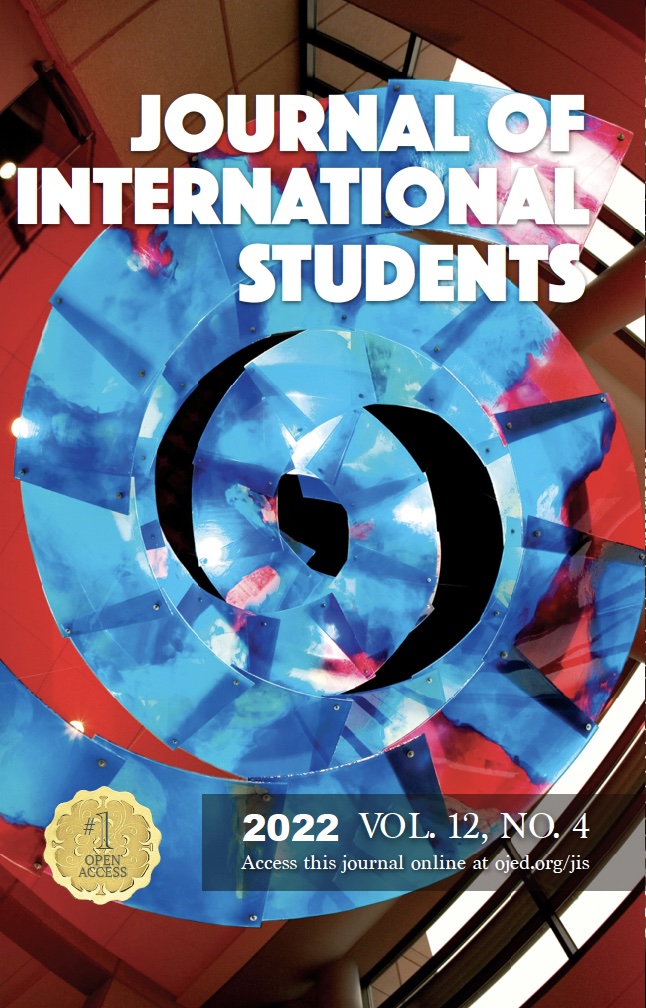Reimagining a Model for International Students’ College Readiness and Transition
DOI:
https://doi.org/10.32674/jis.v12i4.4162Keywords:
college readiness, educational responsibility, foreign students, hidden curriculum, international education, student developmentAbstract
Existing literature reveals that international students’ contextual awareness of social networks, academic culture, logistics, and cultural differences impact their college readiness and transition to U.S. higher education institutions. As international students’ experience navigating U.S. institutions differs from domestic students’ experience, college readiness models should reflect the differences between the two populations. This article explores Conley’s (2007) facets of college readiness model and its contextual skills and awareness element related to international students. Additionally, this article identifies the need for higher education institutions to take greater ownership in facilitating international students’ college readiness and transition. By supporting international students’ contextual awareness, colleges and universities can help demystify the hidden curriculum and improve international students’ college readiness and transition.
References
Conley, D.T. (2007). Toward a more comprehensive conception of college readiness. Eugene, OR: Educational Policy Improvement Center.
Gautam, C., Lowery, C. L., Mays, C., & Durant, D. (2016). Challenges for global learners: A qualitative study of the concerns and difficulties of international students. Journal of International Students, 6(2), 501-526. https://doi.org/10.32674/jis.v6i2.368 DOI: https://doi.org/10.32674/jis.v6i2.368
Luo, Z., Wu, S., Fang, X., & Brunsting, N.C. (2019). International students’ perceived language competence, domestic student support, and psychological well-being at a U.S. university. Journal of International Students, 9(4), 954-971. https://www.doi.org/10.32674/jis.v0i0.605 DOI: https://doi.org/10.32674/jis.v0i0.605
Mohamed, A. M. (2020). Challenges and adjustment of international students in Malaysia: Pre-departure factors and post-arrival strategies. Asian Journal of Multidisciplinary Studies, 8(10), 43-52. Retrieved from https://www.asianjournal.org
Moores, L., & Popadiuk, N. (2011). Positive aspects of international student transitions: A qualitative inquiry. Journal of College Student Development, 52(3), 291-306. https://doi.org/10.1353/csd.2011.0040 DOI: https://doi.org/10.1353/csd.2011.0040
Open Doors. 2020. International students. Retrieved from: https://www.iie.org/Research-and-Insights/Open-Doors
Wink, J. (2011). Critical pedagogy: Notes from the real world. Pearson.
Downloads
Published
Issue
Section
Categories
License
Copyright (c) 2021 Journal of International Students

This work is licensed under a Creative Commons Attribution-NonCommercial-NoDerivatives 4.0 International License.
All published articles are licensed under a Creative Commons Attribution-NonCommercial-NoDerivs 4.0 Unported License.















